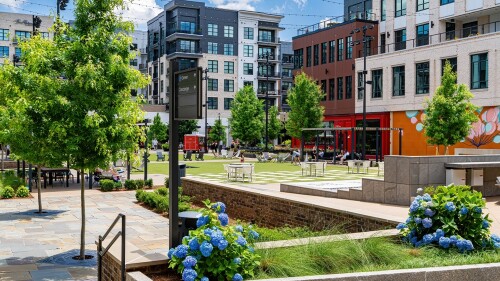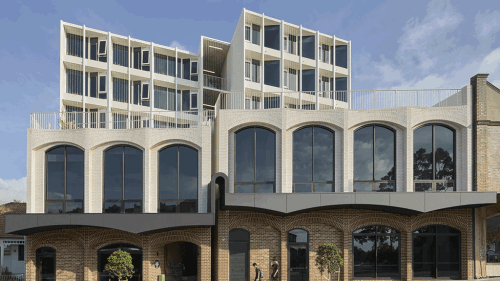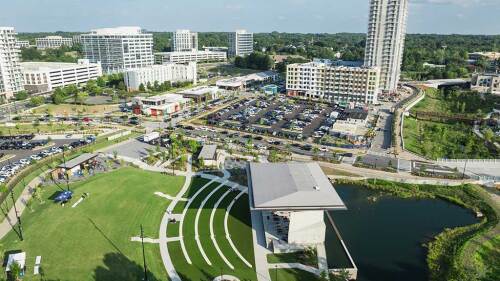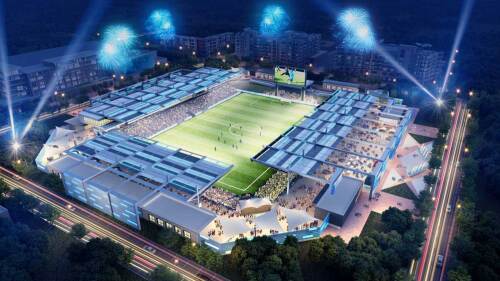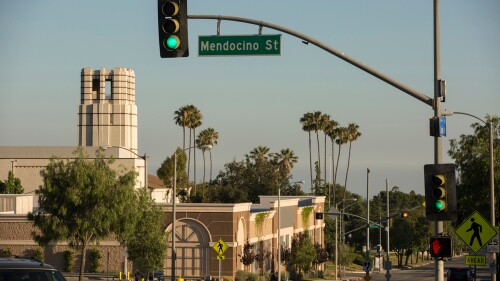Topics
Capital Markets and Finance
Investors will be facing an environment wherein slower economic growth is expected in the coming years, explained Lawrence Lennon, director, capital markets at CBRE Vietnam, who spoke at a mid-November workshop during ULI Asia Pacific’s REImagine 2024 in Vietnam.
Canada’s real estate market is in the midst of a pivotal shift as the Bank of Canada (BoC) rolls back what has been “higher for longer” interest rates. Yet despite welcome relief on financing costs, real estate leaders are still moving somewhat cautiously amid uncertainty and fluid market dynamics.
Georgetown’s M.S. in Global Real Assets, a collaboration between a top-ranked business school and a premier center for global real estate, prepares you to address challenges at the intersection of real estate, infrastructure, and sustainability.
Design & Planning
Yesterday, more than 400 commercial real estate professionals and elected officials gathered at the National Building Museum for the third annual Future Forum, a regional conference for public and private-sector leaders.
Business and political leaders are quick to celebrate mixed-use developments as a way to build sustainable, vibrant, and resilient communities. The journey from conception to ribbon-cutting can be daunting, though. At their outset, these developments face cyclical challenges, such as high interest rates, increased construction costs, labor shortages, and access to capital. Then come structural challenges, such as hybrid work models, changing retail habits, demographic shifts, and rising environmental expectations. Together, these things make completing mixed-use developments complex.
In the Sydney suburb of Marrickville, two not-for-profit organizations—Fresh Hope Communities, the public benevolent institution entity of churches of Christ in NSW and ACT, and Nightingale Housing of Brunswick, Victoria—came together to develop a building that contains 54 units renting at 80 percent of market rates as well as two community-focused commercial spaces. The Churches of Christ Property Trust has provided a 99 year lease for the land, which allows the units to remain affordable far beyond a more typical 10-year period.
Development and Construction
The June 1982 issue of Urban Land. Detroit Mayor Coleman Young, Hamtramck Mayor Robert Kozaren, and General Motors Chairman Roger Smith pose before the remains of Chrysler’s former Dodge Main plant at a formal project groundbreaking in May 1981.
When Ballantyne first emerged out of North Carolina farmland, more than 30 years ago, the original developers of this master-planned project already had a concrete vision in mind for its future: evolution. The development team intrinsically understood that, as Ballantyne—an affluent community nestled in south Charlotte—would expand beyond its farmland roots, the project would need to adapt to meet the needs of a more diverse and changing demographic.
A major investment in the long-term future of professional soccer is set to dramatically transform the last major land parcel in downtown Oklahoma City. Thanks to a successful public/private partnership, America’s 20th-largest city is seeing a continued resurgence in its downtown.
Resilience and Sustainability
Experts encourage the creation of community rebuilding authorities and
other measures to ensure the best-case scenario for recovery after January’s wildfires
other measures to ensure the best-case scenario for recovery after January’s wildfires
Nestled in the forested hills west of Napa Valley, Enchanted Hills Camp—which is owned by LightHouse for the Blind and Visually Impaired—has provided unparalleled recreational opportunities and skills training for blind and low-vision campers of all ages since 1950. After the devastating Napa wildfires of 2017 destroyed more than 25 structures and in excess of 900 trees on the property, the camp was not only rebuilt but also reimagined.
In the aftermath of California’s devastating January fires, which caused more than $164 billion in losses, experts are calling for urgent reforms in wildfire insurance policies. Advocates, including Darcy L. Coleman of Alagem Capital, emphasize the need for legislation that empowers the insurance commissioner to mandate incentives for fire-hardening and community mitigation efforts. They warn that, without proactive measures to address skyrocketing premiums and inadequate coverage, homeowners are sure to face heightened financial risks when disaster strikes.
Issues and Trends
October 1970: In a story titled “Computerized Cash Flow Analysis: A New Way to Evaluate Cash Project Feasibility,” the authors, John Hysom and Charles Juengling write, “In land development, cash flow has always been an important factor. In 1970, however, with both long-term and short-term financing at record interest levels, it has now become imperative that buildings and developers have as accurate a projection of cash flows, expenses, and income as possible.”
When my wife and I moved back to the Los Angeles area in 2000, we bought a three-bedroom Spanish-style home two blocks south of the Altadena/Pasadena border, and just a few blocks from the neighborhoods lost in the Eaton fire this past January. It was a special home for us: our first child was born there, and we loved starting our family in such a racially and socio-economically diverse residential community.
ULI and research partner RCLCO have released the ULI Terwilliger Center for Housing’s 2025 Home Attainability Index, a data-rich tool measuring affordability, connectivity, racial disparity, and growth across the United States at the MSA, county, and census tract levels.




![IMG_9889[1].JPG](https://cdn-ul.uli.org/dims4/default/cffa1ef/2147483647/strip/true/crop/5712x3210+0+537/resize/500x281!/quality/90/?url=https%3A%2F%2Fk2-prod-uli.s3.us-east-1.amazonaws.com%2Fbrightspot%2F44%2F9f%2F1ad4a6684815aa39dacc30bf931a%2Fimg-98891.JPG)
